How to grow Viburnum Bodnantense
Also known as Viburnum x bodnantense or Bodnant viburnum, this upright deciduous shrub is part of the Adoxaceae or Moschatel family. With a genus of 150 shrubs, Viburnums are native to the Northern Hemisphere.
Viburnum bodnantense is a large, fast-growing bushy shrub with a strong scent. Flowering between autumn and spring, the clustered pink and white flowers make an elegant winter display. Growing to heights of 300cm and 180cm in spread, Viburnum bodnantense can be planted in the middle of flower beds and mixed borders. The vibrant colours and sweet scent of Viburnum are attractive to pollinators such as bees and butterflies and the plant can even be cut to bring the fragrant flora indoors.
The most common cultivar of Viburnum bodnantense is the ‘Dawn’ or Arrowood variety. This name stems from its history of the shoots being used as arrow-shafts in pre-historic times; their bark was also used as herbal medicine throughout history. Awarded the prestigious RHS (Royal Horticultural Society) Award of Garden Merit, Viburnum bodnantense is ideal for growing under UK conditions.
Ready to discover everything you need to know about Viburnum bodnantense? Read on to find out more about this scented bushy shrub...
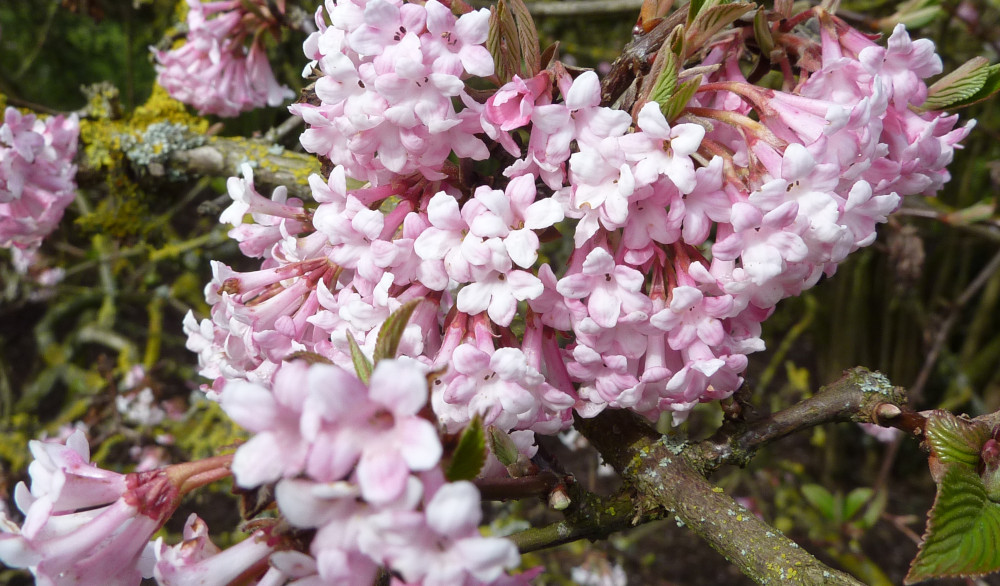
Key Information
Soil pH
Position

Hardiness

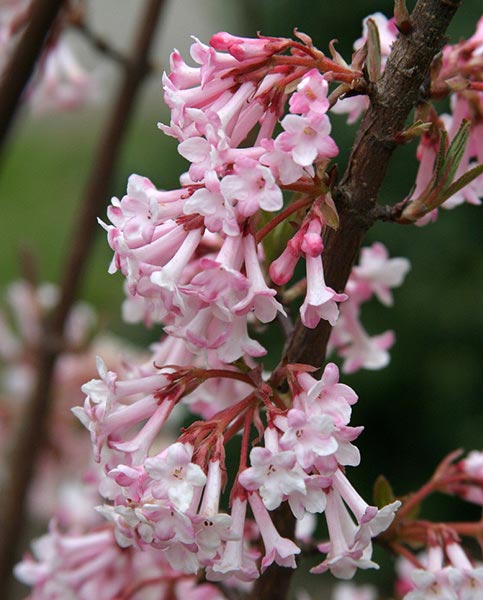
Where & when to plant Viburnum Bodnantense
Viburnum bodnantense can be planted in the middle position of a border or flower bed, in front of taller flowers at the back. Due to its growth pattern and fragrant flora, Viburnum bodnantense is ideal grown in entrances and walkways, providing sweet scents and candy colour across the chillier months.
How to plant Viburnum Bodnantense
1. For best results, plant Viburnum bodnantense in the spring. Find a position that benefits from plenty of sunlight - between 4-8 hours a day - with well-draining soil
2. Start by digging a hole between 2-3 times the size of the root in your desired spot or container. If you are planting multiples give each plant 180-200cm of space to allow the shrubs to spread without impacting each other
3. Once planted, backfill with the soil that you dug out for the hole. Alternatively, fill with new soil with a mixture of sand or peat to create well-draining soil and prevent root rot
4. Water in to settle. Viburnum needs regular watering through the active growth phase to help it establish, so make sure that the soil surrounding it is moist. You may decide to add mulch to retain moisture even further.

What to plant with Viburnum Bodnantense
As an autumn and winter grower, Viburnum bodnantense is well-matched with plants and shrubs which have similar growth patterns. Lonicera purpusii or Winter Honeysuckle is one such plant, flowering between December and March with fragrant white tubular flowers. Another aromatic winter bloomer is Chimonanthus praecox or Wintersweet with small yellow flowers. You can also pair with other Viburnums for a combination of pinks, whites and even coppers.
Please contact our excellent Customer Care Team if you would like any help or planting tips for your Viburnum bodnantense. Below are a few ideas to help get you started.
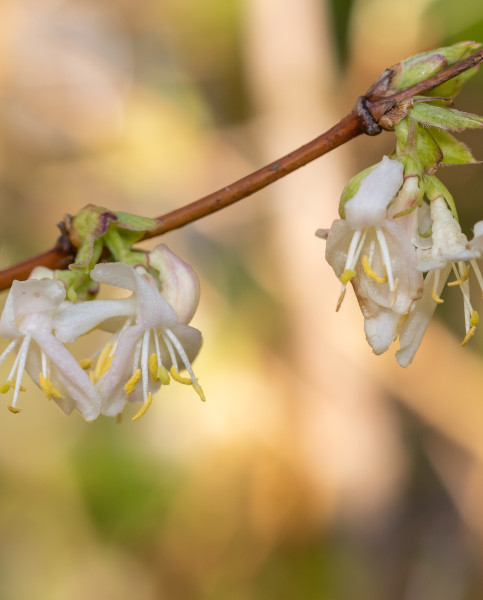
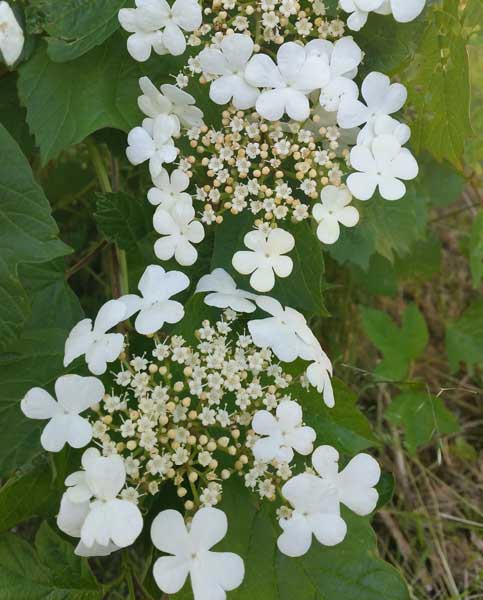
How to care for Viburnum Bodnantense
Pruning & Deadheading
While low maintenance for most of the year, pruning may be required for Viburnum bodnantense due to its bushy growth habit. As always, prune any diseased or damaged shoots and any unsightly stems that make the shrub look messy. Prune once the flowering season is over in spring for best results.
Watering
Water regularly during the growth stage for healthy growth. Keep the soil moist and well-drained by watering once a week once established. Stop watering in the autumn to prep Viburnum for the colder temperatures.
Cold Protection
As fully hardy perennials, Viburnum bodnantense can tolerate temperatures as low as -20°C. You do not have to put any cold protection measures in place - do not prune too soon in spring to avoid risk of frost damage however.
Pests & Diseases
Viburnum bodnantense is regarded as generally pest and disease-free. Two potential diseases include leaf spot and root rot. Leaf spot appears as black legions on foliage, brown spots or a mixture of light and dark areas. Although Viburnum enjoys moist, well-draining soil, be careful not to overwater; too much water will starve the roots of oxygen.
How to propagate Viburnum Bodnantense
The best way to propagate Viburnum bodnantense is by taking semi-ripe cuttings before they begin to flower in autumn. It is important to use sterile and clean tools to take cuttings to reduce the spread of any disease
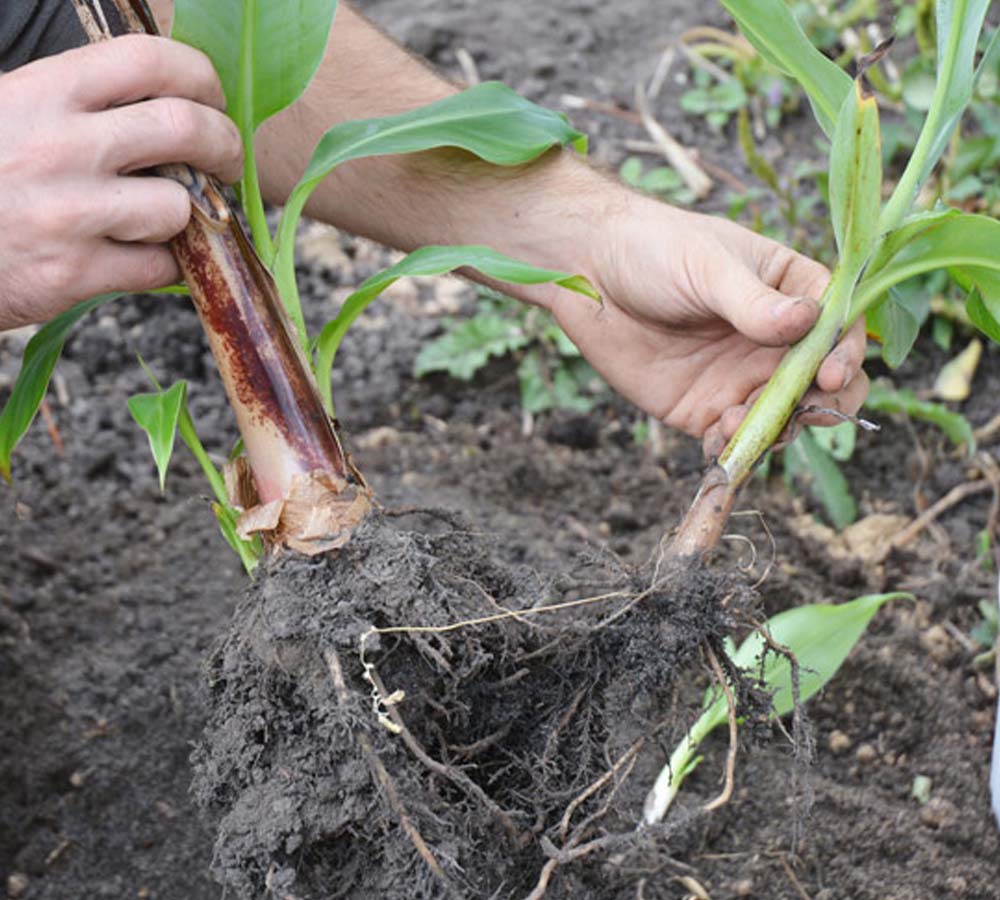
Take cuttings in the morning for the best results; plan in advance by having a small pot or container of water to hand prior to cutting. Take 10-15cm from healthy shoots and add them directly to water to stop them from losing moisture

Once you have your cuttings, remove the leaves from the lower third (3-5cm) of the stem, gently damage with the end of the cutting with a pair of scissors to encourage fresh growth. Add to potted rooting soil and water in to settle

Cover with a plastic bag or cloche and put them in a warm and sunny position away from direct sunlight. Water regularly to keep the soil moist and lightly mist the foliage as needed. Check the cuttings for rooting every 3 weeks or so by gently pulling on the cutting.




